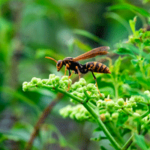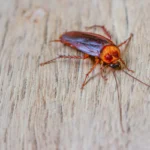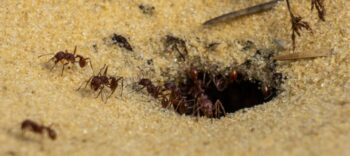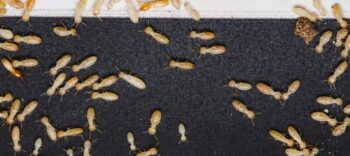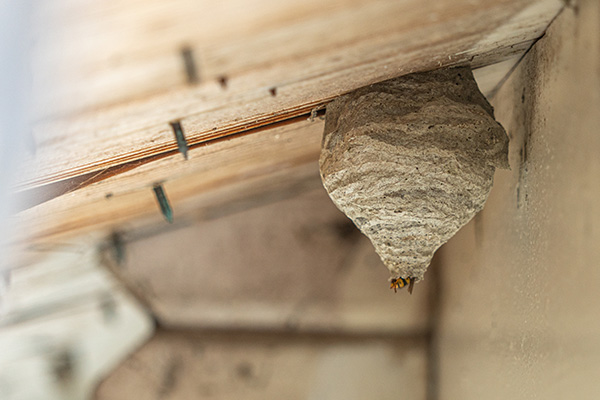
It’s summer here in Lubbock TX, and insects are everywhere! The warm weather invites insects of all kinds to come out in full force. This includes wasps, which play a needed role in our environment. However, wasps can build nests near residential areas, creating a hazardous environment for anyone nearby. If you notice a growing number of these stinging insects flying to and from a certain area, there’s a chance you have a nest nearby. Because there are different types of wasps, it’s important to know how to tell them all apart! The team at Bug Out are here to help you learn what different wasp nests look like.
What Do Wasp Nests Look Like?
Wasp nests are typically grey or brown, resembling a papery structure made from chewed wood pulp and saliva.
Wasp nests vary in appearance, but are most commonly found in a characteristically delicate texture. They are usually located in sheltered spots like eaves, attics, or on tree branches. The structure of wasp nests can range from open, umbrella-like shapes to enclosed forms with a singular entrance. The size and design can differ greatly, influenced by the wasp species and the age of the nest. Early identification of these nests is essential for their safe removal.
Wasp Nest Characteristics
The four main types of wasps we have in our area are paper wasps, mud daubers, yellowjackets, and bald-faced hornets. Here is what to know about the appearance of their nests:
- Paper wasps
- A paper wasp nest often looks like an upside-down umbrella.
- These nests tend to be more open, and can get quite large in size.
- They are typically supported by a single stalk and made out of a papery substance.
- Nests can be located under and within the eaves of structures, in attics and wall voids, and in other enclosed areas.
- Mud daubers
- Female wasps construct their nests out of mud.
- The nests are small and tubular in size, often looking like organ pipes.
- They are typically found in cracks or crevices.
- Tend to build their nests in sheltered areas, including under eaves, garages, attics, or on the sides of buildings.

- Yellowjackets
- Nests are a papery material and have a single opening.
- The inside of a yellowjacket nest can have up to 100 tiers of cells.
- Yellowjackets can also build underground nests that can be enormous in size.
- Favor areas near the ground, in hollow trees, under porches, and a number of other areas.
- Bald-faced hornets
- These nests are almost always at least three feet off the ground.
- They are made of chewed wood fibers mixed with saliva.
- They can grow to the size of a football or basketball.
- Builds its nest oftentimes in trees, bushes, or wooded areas, but they also can be on buildings.
The Danger of Wasp Nests
It is important to avoid approaching wasp nests if you have one nearby. It’s especially crucial to never attempt to knock one down on your own. There are likely many more stinging insects inside than you’d expect, creating a hazard for anyone nearby. Wasps can sting at will multiple times. In the case of a wasp nest on or near your Lubbock TX property, contact the wasp removal team at Bug Out today.

